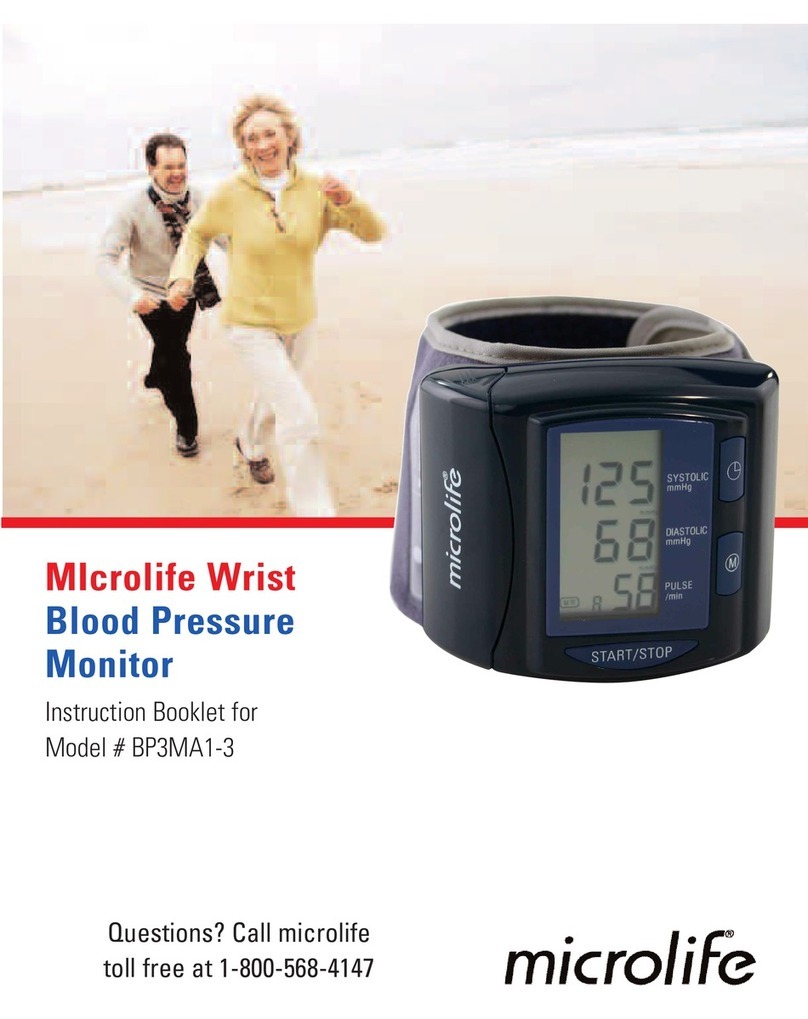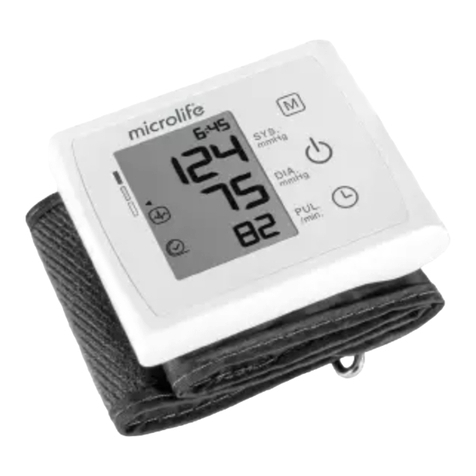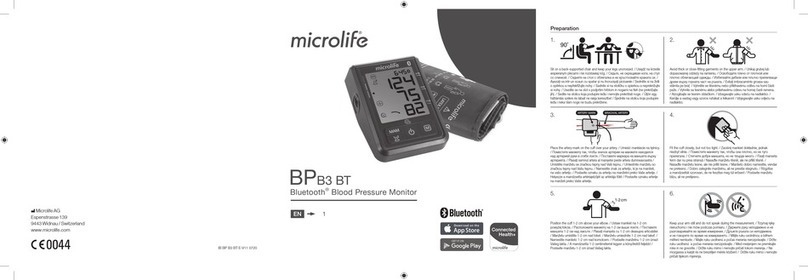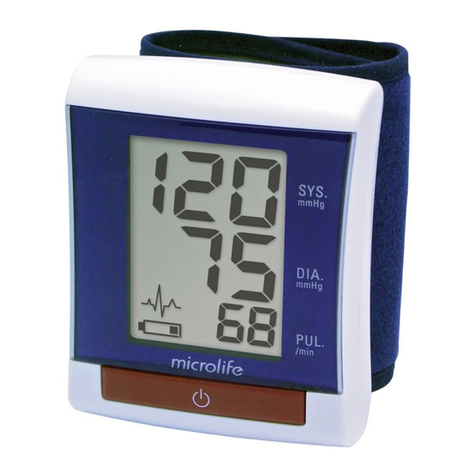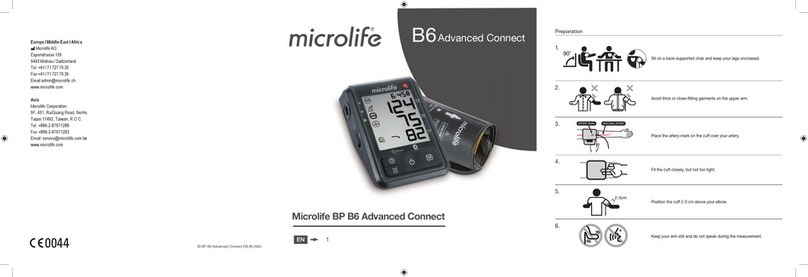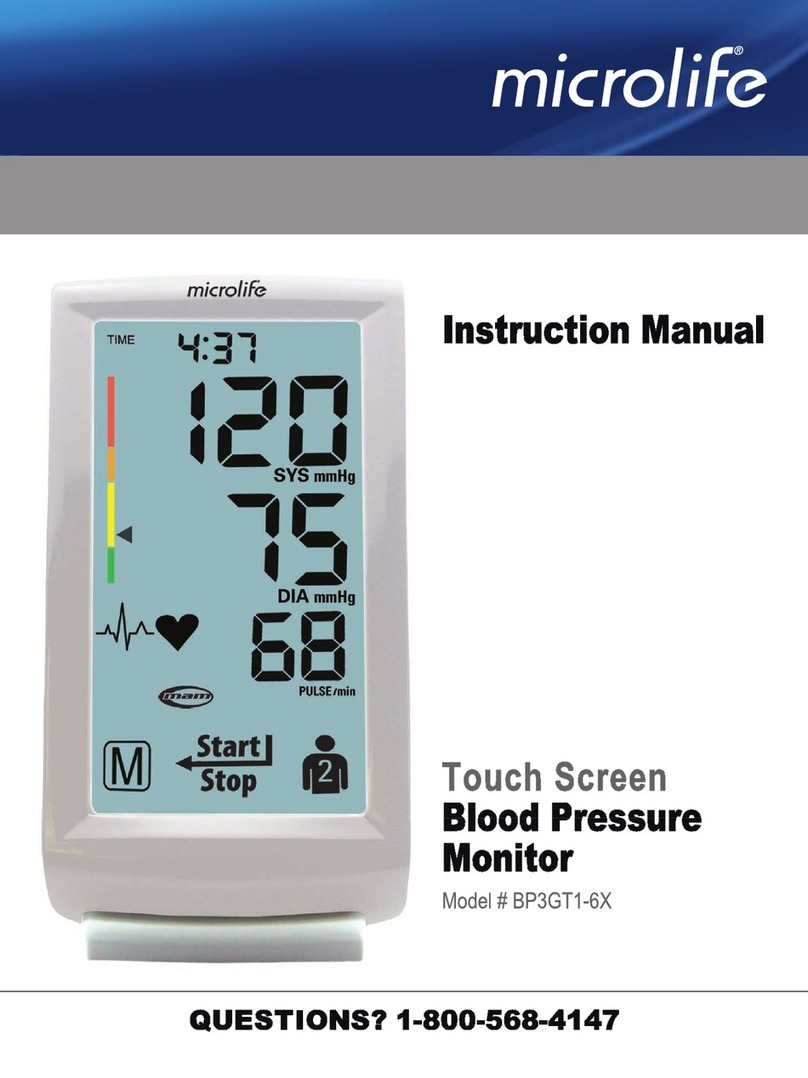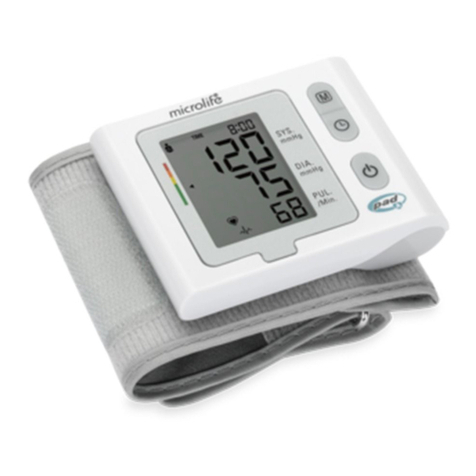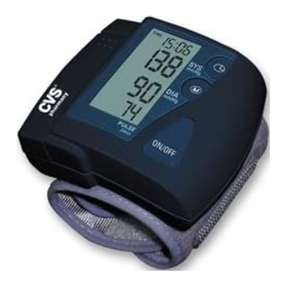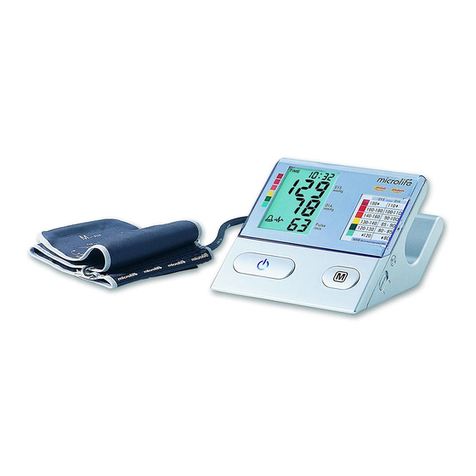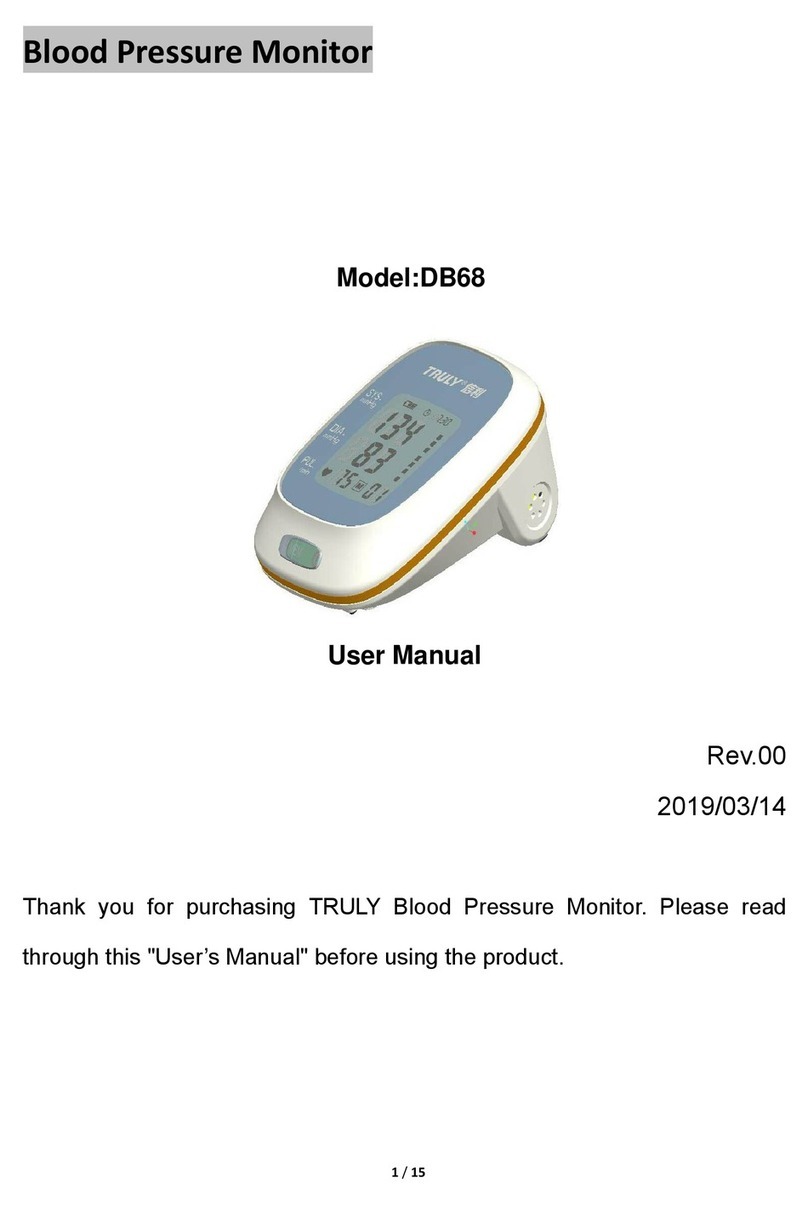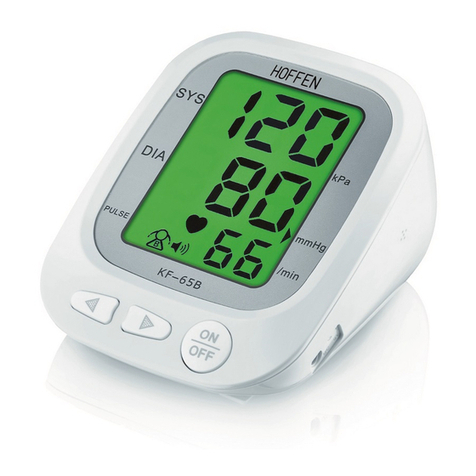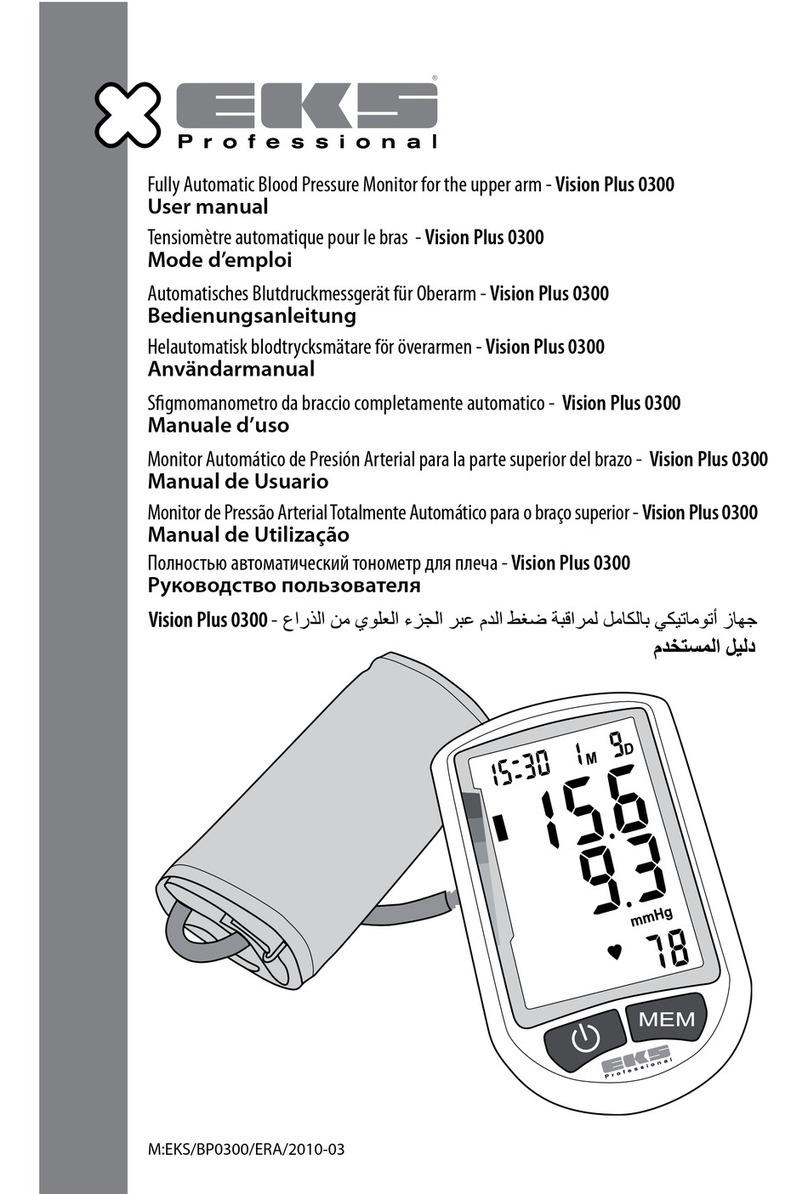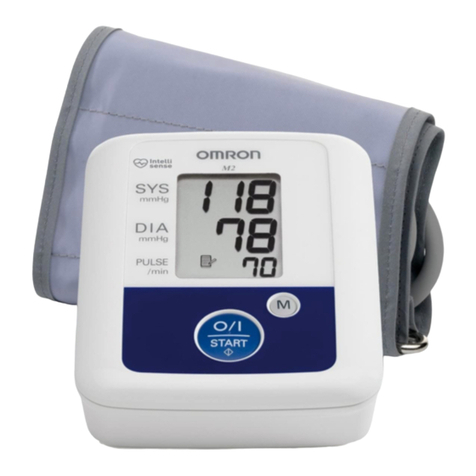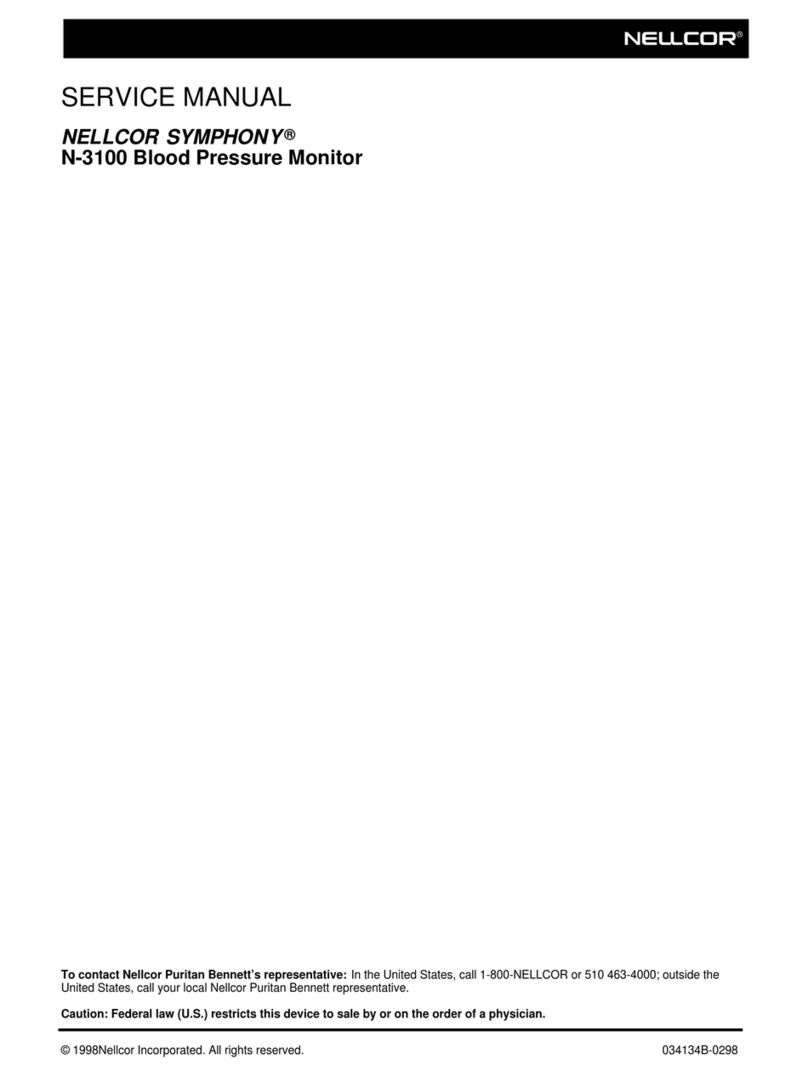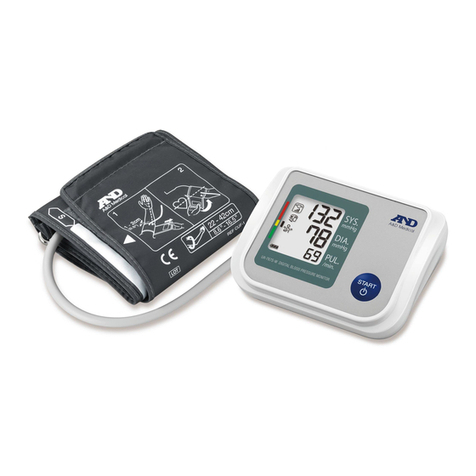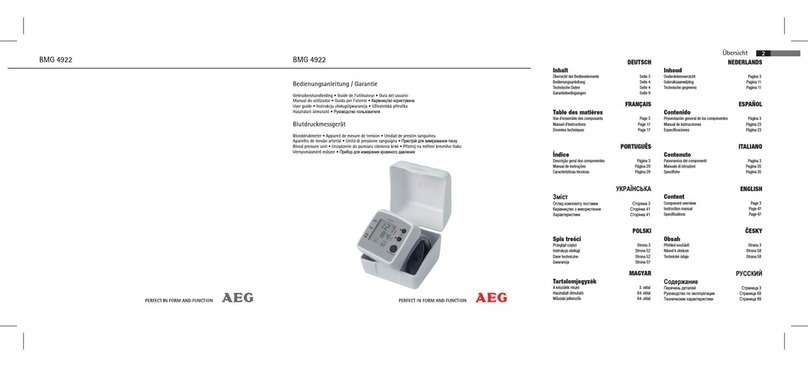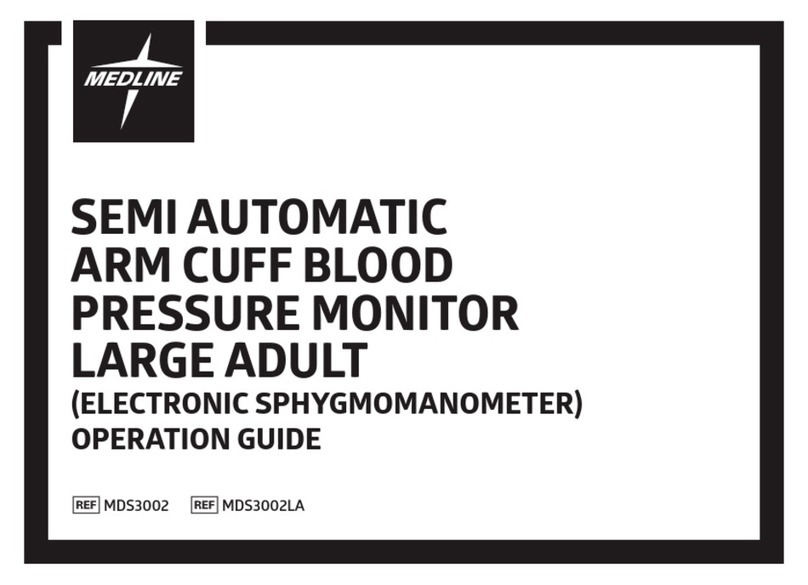3BP A6 PC EN
•The pulse display is not suitable for checking the
frequency of heart pacemakers!
•If you are pregnant, you should monitor your blood pressure
very closely as it can change drastically during this time!
This monitor is specially tested for use in pregnancy and
pre-eclampsia. When you detect unusual high readings in
pregnancy, you should measure again after 4 hours. If the
reading is still too high, consult your doctor or gynecologist.
How do I evaluate my blood pressure?
The higher value is the one that determines the evaluation.
Example: a blood pressure value of 140/80 mmHg or a value of
130/90 mmHg indicates «blood pressure too high».
2. Important Facts about Atrial Fibrillation (AFIB)
What is Atrial Fibrillation (AFIB)?
Normally, your heart contracts and relaxes to a regular beat.
Certain cells in your heart produce electrical signals that cause the
heart to contract and pump blood. Atrial fibrillation occurs when
rapid, disorganized electrical signals are present in the heart’s two
upper chambers, called the atria; causing them to contract irregu-
larly (this is called fibrillation). Atrial fibrillation is the most common
form of heart arrhythmia or irregular heart beat. It often causes no
symptoms, yet it significantly increases your risk of stroke. You’ll
need a doctor to help you control the problem.
How does AFIB impact my family or me?
People with AFIB have a five-fold higher risk of getting stroke.
Since the chance of having a stroke increases with age, AFIB
screening is recommended for people over 65 years and older.
However, for people from the age of 50 years with high blood pres-
sure (hypertension), diabetes, coronary heart failure or have had a
previous stroke AFIB screening is also recommended. Early diag-
nosis of AFIB followed by adequate treatment can significantly
reduce the risk of getting stroke.
In young people AFIB screening is not recommended as it could
generate false positive results and unnecessary anxiety. In addi-
tion, young individuals with AFIB have a relatively low risk of
getting stroke as compared to elder people.
For more information please visit our website: www.microlife.com.
Microlife AFIB detection provides a convenient way to screen
for AFIB (only in AFIB/MAM mode)
Knowing your blood pressure and knowing whether you or your
family members have AFIB can help reduce the risk of stroke.
Microlife AFIB detection provides a convenient way to screen for
AFIB whilst taking your blood pressure.
Risk factors you can control
High blood pressure and AFIB are both considered «controllable»
risk factors for strokes. Knowing your blood pressure and knowing
whether you have AFIB is the first step in proactive stroke prevention.
3. Using the Device for the First Time
Inserting the batteries
Switch the lock switch AN to «unlock» position. The battery
compartment 5is on the bottom of the device. Insert the batteries
(4 x 1.5 V, size AAA), thereby observing the indicated polarity.
Setting the date and time
1. After the new batteries are fitted, the year number flashes in the
display. You can set the year by pressing either the «+» AM or
the «-» AL button. To confirm and then set the month, press the
time button AT.
2. Press the «+» AM or the «-» AL button to set the month. Press
the time button AT to confirm and then set the day.
3. Follow the instructions above to set the day, hour and minutes.
4. Once you have set the minutes and pressed the time button,the
date and time are set and the time is displayed.
5. If you want tochange the date and time, press and hold the time
button down for approx. 3 seconds until the year number starts
to flash. Now you can enter the new values as described above.
Selecting the correct cuff
Microlife offers different cuff sizes. Select the cuff size to match the
circumference of your upper arms (measured by close fitting in the
centre of the upper arm).
Table for classifying home blood pressure values in adults in
accordance with the international Guidelines (ESH, AHA, JSH).
Data in mmHg.
Range Systolic Diastolic Recommendation
blood pressure too
low
100 60 Consult your
doctor
1. blood pressure
optimum 100 - 130 60 - 80 Self-check
2. blood pressure
elevated 130 - 135 80 - 85 Self-check
3. blood pressure too
high 135 - 160 85 - 100 Seek medical
advice
4. blood pressure
dangerously high 160 100 Urgently seek
medical advice!




